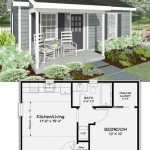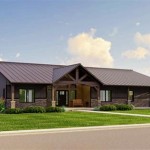Chicken House and Run Plans
Chickens can be a great addition to any homestead, providing fresh eggs, companionship, and pest control. However, proper housing is essential for the health and well-being of your feathered friends. Whether you are an experienced chicken keeper or just starting out, having well-designed chicken house and run plans is crucial for creating a comfortable and functional space for your flock.
Essential Features of a Chicken House
An ideal chicken house should meet the following requirements:
- Adequate Space: Provide at least 3-4 square feet of floor space per chicken.
- Ventilation: Allow for proper air circulation to prevent ammonia buildup and respiratory problems.
- Perches: Chickens need elevated roosting spots for sleep and comfort.
- Nesting Boxes: Provide one nesting box for every 3-4 hens, filled with clean bedding.
- Light: Install windows or artificial lighting to ensure 12-14 hours of light per day.
- Insulation: Consider insulating the house in colder climates to protect the chickens from extreme temperatures.
Designing a Chicken Run
The chicken run is an outdoor space where your hens can roam and exercise. It should:
- Provide Ample Space: Allow at least 8-10 square feet of run space per chicken.
- Be Enclosed: Use fencing or wire mesh to protect the chickens from predators.
- Have Access to Shelter: Include a covered area within the run for the chickens to escape the sun or rain.
- Offer Vegetation: Plant grass, shrubs, or trees to provide shade and natural foraging opportunities.
- Be Easy to Clean: Design the run with minimal obstacles and easily accessible gates for maintenance.
Considerations for Plan Selection
When choosing chicken house and run plans, consider the following factors:
- Climate: The climate in your area will dictate the type of materials and insulation required.
- Number of Chickens: The size of your flock will determine the dimensions of the house and run.
- Materials: Choose durable and weather-resistant materials such as wood, metal, or plastic.
- Budget: Determine your budget before selecting materials and design options.
- Maintenance: Consider the ease of cleaning and repairing the house and run.
Getting Started
Once you have chosen your plans, gather the necessary materials and tools. Follow the instructions carefully, paying attention to details such as ventilation holes, predator-proof fencing, and insulation. If you are not confident in your DIY skills, consider hiring a professional builder.
With well-designed chicken house and run plans and careful construction, you can provide your chickens with a safe and comfortable home while ensuring their health and productivity.

Diy En Coop Plans 40 Free Beginner Designs Easy Coops

En House Plans Singapore

Diy En Coop Plans 40 Free Beginner Designs Easy Coops

Diy En Coop Plans 40 Free Beginner Designs Easy Coops
:max_bytes(150000):strip_icc()/free-chicken-coop-plans-1357113_FINAL-newlogo-313bc33529ee48778cba438e1cc841e7.png?strip=all)
13 Free En Coop Plans You Can Diy This Weekend

Diy En Coop Plans 40 Free Beginner Designs Easy Coops

Diy En Coop Plans 40 Free Beginner Designs Easy Coops

Diy En Coop Plans 40 Free Beginner Designs Easy Coops
:max_bytes(150000):strip_icc()/steamy-kitchen-59b95be10d327a001198fdd8.jpg?strip=all)
13 Free En Coop Plans You Can Diy This Weekend

En Coop Run Plans 10x8 Step By Construct101








